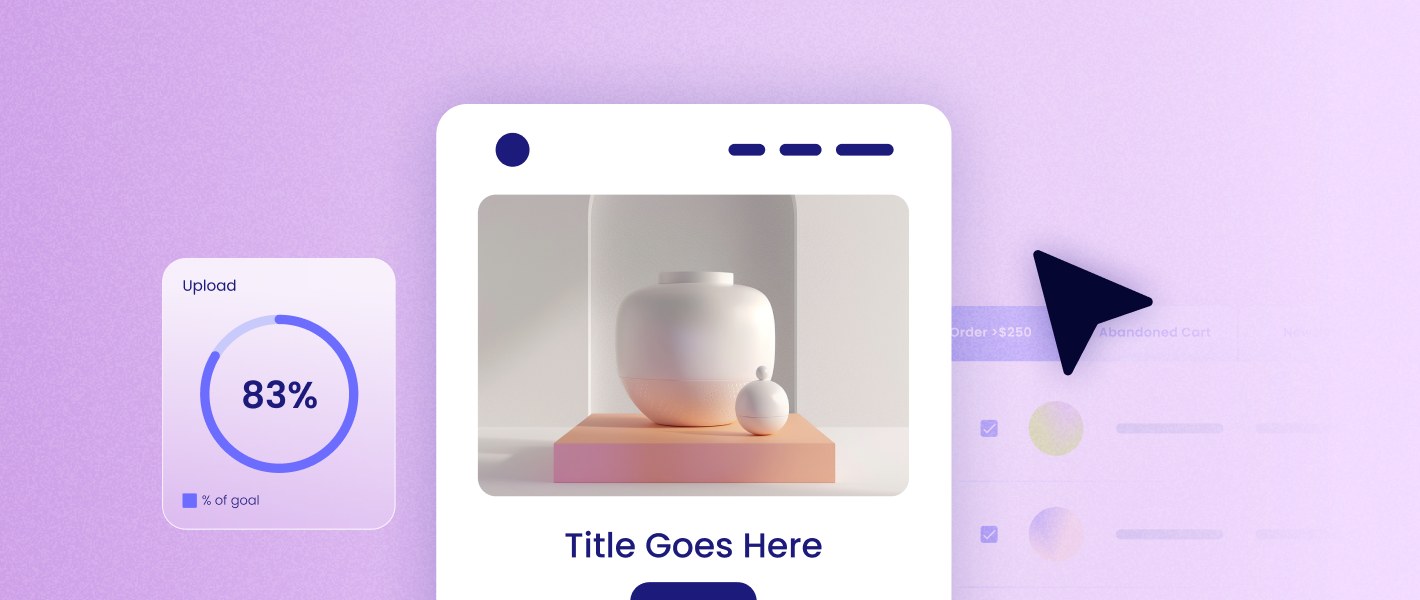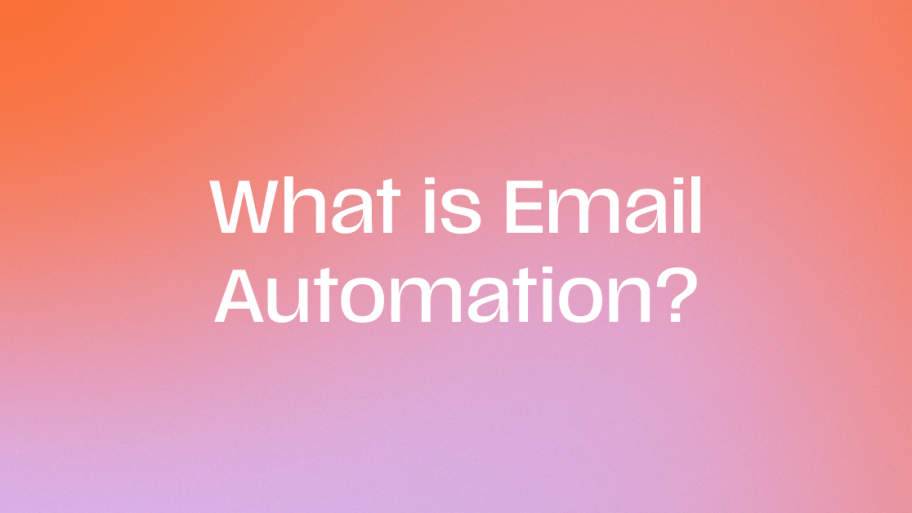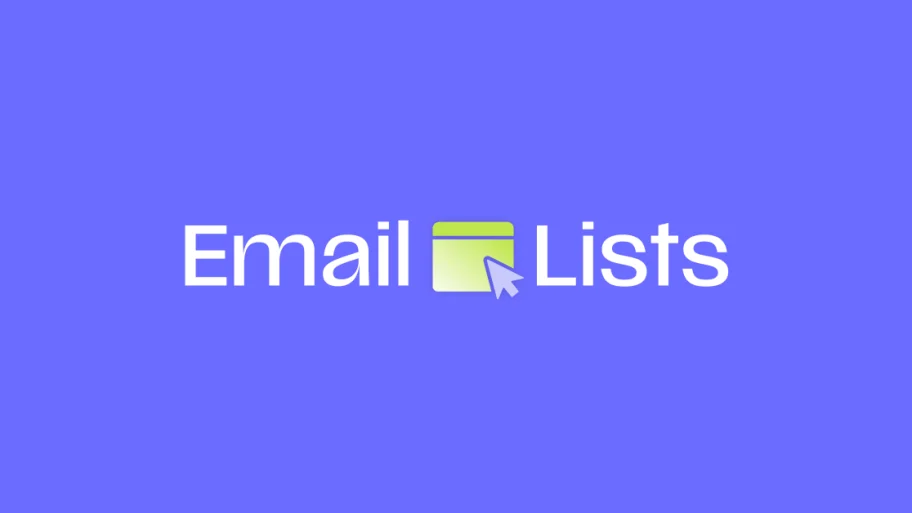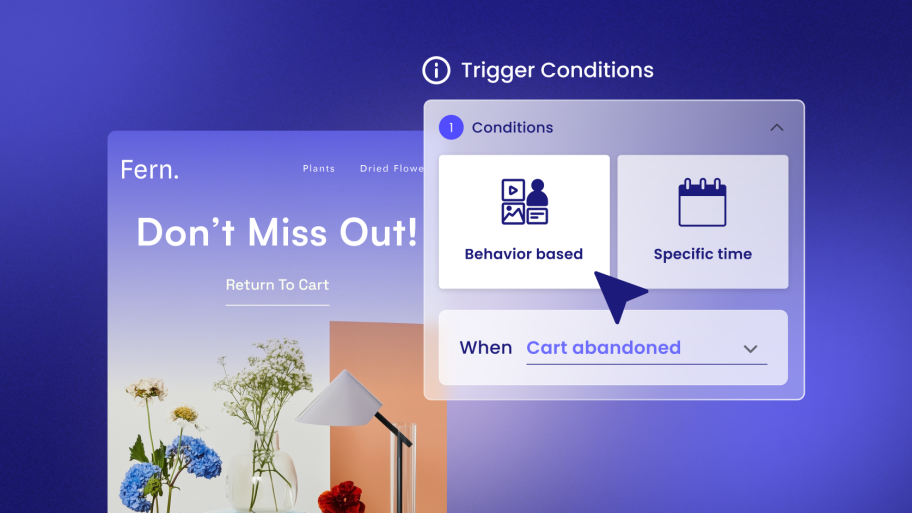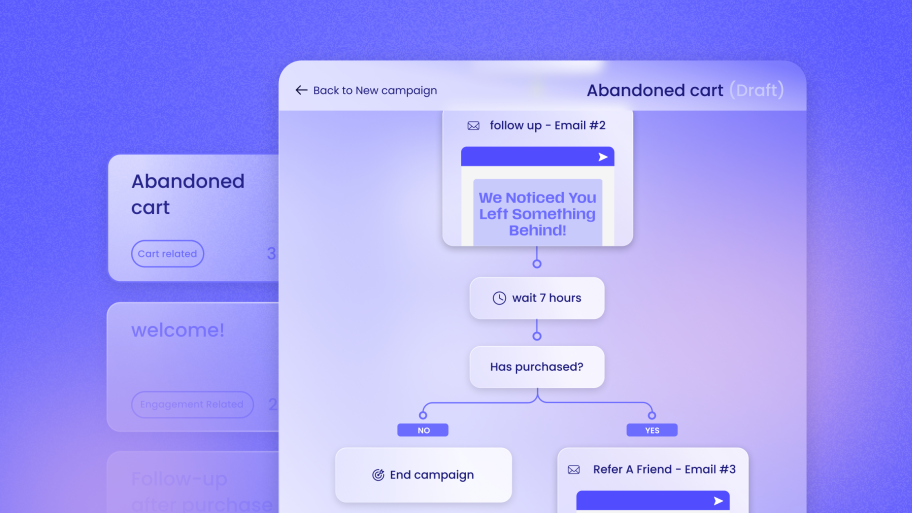Key Takeaways
- Direct Audience Connection: Newsletters provide a direct and reliable channel to engage with your audience, independent of third-party platform algorithms.
- WordPress-Native is Simpler: Using a newsletter tool built specifically for WordPress, like Send by Elementor, eliminates integration issues, simplifies workflow, and keeps all your management within a familiar dashboard.
- Template Design is Crucial: An effective template must be responsive, on-brand, and feature a clear visual hierarchy with compelling calls-to-action (CTAs) to guide subscriber behavior.
- Content is King: Your template is the vehicle, but engaging content is the fuel. Focus on providing value through a mix of educational content, promotions, and personal insights to keep subscribers opening your emails.
- Automation Unlocks Growth: Tools with automation capabilities allow you to set up welcome series, abandoned cart reminders, and other flows that nurture leads and generate revenue on autopilot.
- Analytics Drive Improvement: Regularly tracking key metrics like open rates, click-through rates, and conversions is essential for understanding what works and refining your strategy over time.
Why Your WordPress Site Needs a Newsletter (More Than Ever)
In an era dominated by fleeting social media trends and the constant battle for visibility on search engines, building an email list is like securing your own piece of digital real estate. It’s an asset you own and control. A newsletter serves as the foundation of this asset, providing a structured way to nurture the relationship between you and your audience.
So, why is this so important?
- To Drive Repeat Traffic: Your latest blog post is live. Now what? Instead of waiting for people to find it, you can deliver it directly to the inboxes of people who have already expressed interest in your content. A well-timed newsletter can send a significant spike of traffic to your website moments after you hit “publish.”
- To Nurture Leads and Build Relationships: Not everyone who visits your site is ready to buy. A newsletter allows you to stay top-of-mind, providing value, building trust, and gently guiding subscribers through the customer journey. By consistently sharing helpful tips, industry news, or behind-the-scenes content, you transform a passive visitor into a loyal follower.
- To Boost Sales and Conversions: Email marketing consistently delivers one of the highest returns on investment (ROI) of any marketing channel. Whether you’re a WooCommerce store owner announcing a new product, a consultant offering a new service, or a blogger promoting an affiliate product, your newsletter is a direct sales channel. You can run promotions, offer exclusive discounts, and announce sales to an audience that’s already warmed up to your brand.
- To Gather Valuable Feedback: Your subscribers are your most engaged audience members. A newsletter can be a two-way street. Use it to run polls, ask for feedback on new ideas, and understand your audience’s pain points. This direct feedback is invaluable for shaping your content strategy, product development, and overall business direction.
In short, a newsletter transforms your WordPress site from a static brochure into a dynamic communication hub. It’s the engine that powers long-term audience engagement and sustainable growth.
What Makes an Effective Newsletter Template? Core Principles
Before diving into the tools you can use, it’s essential to understand what separates a great newsletter template from one that gets instantly deleted. Your template is the first impression you make in the inbox. It needs to be professional, easy to read, and designed to achieve a specific goal.
Here are the foundational elements of a high-performing newsletter template:
- Responsive Design: This is non-negotiable. Over half of all emails are opened on mobile devices. Your template must look just as good on a small smartphone screen as it does on a large desktop monitor. A responsive design automatically adjusts the layout, font sizes, and images to fit any screen size, ensuring a seamless user experience for every subscriber.
- Consistent Branding: Your newsletter is an extension of your brand. The template should incorporate your logo, brand colors, and typography. This consistency builds brand recognition and trust. When a subscriber opens your email, they should immediately know it’s from you.
- Clear Visual Hierarchy: A good design guides the reader’s eye through the content. Use headings, subheadings, and strategic use of white space to create a clean, scannable layout. The most important information should stand out. Avoid cluttered designs that overwhelm the reader.
- A Compelling Header: The header is the first thing people see. It should clearly display your logo and brand name. Some brands also include a succinct tagline or a link to their website.
- An Engaging Body: This is where your main content lives. Use short paragraphs, bullet points, and images to break up the text and make it digestible. Whether you’re sharing a blog post, a product update, or a personal story, the content should be valuable and relevant to your audience.
- Strong Calls-to-Action (CTAs): What do you want your reader to do after reading the newsletter? Visit a blog post? Shop a sale? Download a resource? Every newsletter should have a clear primary CTA. Use action-oriented language (e.g., “Read More,” “Shop Now,” “Get Your Guide”) and design your CTA buttons to be prominent and clickable.
- An Informative Footer: The footer is a legal and practical necessity. It must include your physical mailing address and a clear, one-click unsubscribe link to comply with anti-spam laws like CAN-SPAM. You can also use the footer to include links to your social media profiles and a reminder of why the person is subscribed.
A template built on these principles provides a reliable framework for every email you send, allowing you to focus on what matters most: creating valuable content.
The Power of WordPress-Native Solutions
When it comes to choosing a newsletter tool for your WordPress site, you have two main paths: an external, third-party service (like Mailchimp or ConvertKit) or a WordPress-native plugin.
External services are powerful, but they come with a significant drawback: they operate outside your WordPress ecosystem. This separation often leads to what web creators call “integration friction.” You have to connect your website to the service using an API key, manage separate logins, and deal with potential data syncing issues. Your website data is on your server, but your subscriber data is somewhere else entirely. This can complicate everything from analytics to automation.
A WordPress-native solution, on the other hand, lives directly inside your WordPress dashboard. It’s built for WordPress, from the ground up. This approach offers several distinct advantages:
- A Single Source of Truth: Your website, your e-commerce store, and your newsletter tool are all in one place. Your contact data, sales data, and email analytics are unified, providing a much clearer picture of your marketing efforts.
- Seamless Workflow: You don’t need to jump between multiple tabs and dashboards. You can write a blog post, then immediately create and send a newsletter about it without ever leaving WordPress. This streamlined workflow saves time and reduces complexity.
- Deeper Integration: Native solutions can tap directly into the WordPress and WooCommerce databases. This allows for incredibly powerful segmentation and automation. For example, you can easily create a segment of customers who bought a specific product or automatically send a follow-up email to someone who filled out a specific form on your site.
- Familiar Interface: The tool’s interface is built using the same UI patterns as WordPress itself. This reduces the learning curve, making it feel intuitive and easy to manage, even for those who aren’t marketing experts.
For web creators and agencies, a native solution is particularly empowering. It allows them to offer comprehensive marketing services to clients without the headache of managing external platforms. They can build a client’s website and then seamlessly integrate a powerful communication toolkit, all within the environment they already know and trust. This not only provides more value to the client but also opens up new opportunities for recurring revenue through ongoing email marketing management.
Top Tools for WordPress Newsletter Templates
Now, let’s explore some of the best tools available for creating and managing newsletter templates directly within WordPress.
1. Send by Elementor: The Ultimate WordPress-Native Communication Toolkit
At the forefront of the WordPress-native movement is Send by Elementor. While many tools focus solely on email, Send positions itself as a complete communication toolkit, integrating Email, SMS, Automation, and Segmentation into a single, seamless WordPress experience. It’s designed specifically for web creators and WooCommerce stores, addressing the key pain points associated with traditional, fragmented marketing platforms.
What makes Send the top choice for a truly integrated WordPress newsletter strategy?
- Truly WordPress-Native: Send isn’t just a plugin that connects to an external service; it’s a full-featured platform built to live inside WordPress. This eliminates the complexity of APIs and data syncing. The setup is effortless, the interface is intuitive for anyone familiar with WordPress, and it works seamlessly with your existing ecosystem.
- Drag-and-Drop Email Builder: Leveraging the user-friendly principles of Elementor, Send includes a powerful drag-and-drop email builder. You can create beautiful, professional, and fully responsive newsletter templates without touching a line of code. It feels less like a clunky email editor and more like a modern page builder.
- Ready-Made Templates: To get you started quickly, Send provides a library of ready-made templates. These are professionally designed based on best practices and can be easily customized with your own branding, colors, and content. This feature is a massive time-saver, allowing you to launch your first campaign in minutes.
- Powerful Marketing Automation Flows: This is where Send truly shines. It comes with pre-built automation workflows for common scenarios like welcoming new subscribers, recovering abandoned carts, and re-engaging inactive contacts. You can set these up once, and they work for you 24/7 to nurture leads and drive sales. You can also build custom flows from scratch to match your unique marketing needs.
- Advanced Audience Segmentation: Send allows you to group contacts based on their behavior, demographics, and purchase history. This deep integration with WordPress and WooCommerce means you can create highly targeted segments. For example, you can send a special offer to customers who have spent over a certain amount or a follow-up email to users who have visited a specific page on your site. This level of personalization dramatically increases engagement and conversions.
- Integrated SMS Marketing: In addition to email, Send incorporates SMS marketing. This allows you to reach customers directly on their phones for time-sensitive promotions, shipping updates, or urgent announcements. Having both email and SMS in one toolkit provides a true multi-channel communication strategy.
- Real-Time, Demonstrable Analytics: One of the biggest challenges for web creators is proving the value of their marketing efforts to clients. Send solves this with clear, real-time analytics right in the WordPress dashboard. You can track open rates, click-through rates, and, most importantly, revenue attribution. You can see exactly how much money each email campaign is generating, making it easy to demonstrate ROI.
For a web creator, Send transforms their service offering. They can now go beyond just building websites and offer ongoing, value-driven marketing services that generate recurring revenue. For a business owner, it simplifies marketing and amplifies results, providing an all-in-one solution that grows with their business.
2. MailPoet
MailPoet is another popular and long-standing newsletter plugin for WordPress. It offers a solid set of features for those looking to manage their email marketing without leaving the dashboard.
- WordPress Integration: Like Send, MailPoet operates within WordPress, allowing you to manage subscribers and send emails from one place.
- Email Editor: It includes a drag-and-drop editor for designing newsletters, along with a selection of pre-built templates.
- WooCommerce Functionality: MailPoet has strong integrations with WooCommerce, offering features like automated emails for first-time customers, abandoned cart notifications, and product recommendations.
- Sending Service: MailPoet provides its own sending service, which helps ensure high deliverability rates, a crucial factor in email marketing.
While MailPoet is a strong contender, Send by Elementor offers a more comprehensive toolkit by including SMS marketing and positioning itself as a complete communication platform built with the web creator’s business model in mind.
3. Newsletter Glue
Newsletter Glue takes a slightly different approach. Its core focus is on streamlining the content creation process.
- Publish Newsletters Like Blog Posts: The standout feature of Newsletter Glue is that it allows you to write your newsletter directly in the WordPress block editor (Gutenberg). You design your template once, and then each week you can write your newsletter just like you would a new blog post, which is a workflow many content creators love.
- Connects to External Services: Unlike Send or MailPoet, Newsletter Glue is not a sending service. Instead, it connects your WordPress site to an external Email Service Provider (ESP) like Mailchimp or ActiveCampaign. It acts as a bridge, giving you a better content creation experience inside WordPress while relying on a third-party service for the actual sending.
This makes it a great choice for those who are already committed to an external ESP but want a more WordPress-centric way to write their emails. However, it doesn’t solve the core issue of having your data and management split across two different platforms.
Step-by-Step Guide: Creating Your First Newsletter Template in WordPress (Using Send by Elementor)
Let’s walk through just how easy it is to create a professional newsletter template using a WordPress-native tool like Send by Elementor. This process transforms a potentially daunting task into a simple, creative exercise.
Step 1: Install and Activate the Plugin
First, you’ll navigate to the “Plugins” section of your WordPress dashboard, search for Send by Elementor, and proceed with the installation and activation. The onboarding process is typically straightforward, guiding you through the initial setup.
Step 2: Navigate to the Template Builder
Once activated, you’ll find a new “Send” menu item in your WordPress dashboard. From there, navigate to the Email Templates section. Here, you’ll see the option to create a new template.
Step 3: Choose Your Starting Point
Send will likely present you with two options:
- Start from a Pre-Made Template: This is the recommended path for beginners. You can browse a library of professionally designed templates for different purposes (e.g., weekly digest, product announcement, welcome email). Select one that best fits your needs.
- Start from Scratch: If you have a specific design in mind, you can start with a blank canvas and build your template using the drag-and-drop editor.
For this guide, let’s select a pre-made template.
Step 4: Customize the Branding and Layout
Now you’re in the drag-and-drop email builder. This is where the magic happens. The interface will feel familiar to anyone who has used a page builder like Elementor.
- Upload Your Logo: Click on the placeholder logo in the header and replace it with your own.
- Set Your Brand Colors: There will be global style settings where you can define your primary and secondary colors. Update these to match your brand palette. This will automatically update the colors of buttons, links, and other elements throughout the template.
- Adjust Fonts: Choose fonts that align with your brand identity for headings and body text.
- Rearrange Sections: The template is made up of sections and blocks. You can easily drag and drop these to reorder them. Don’t like where the image is? Move it. Want to add another text block? Drag one in from the sidebar.
Step 5: Design the Core Template Blocks
Think of your template as a reusable framework. You’ll want to design the parts that will stay the same in every newsletter.
- The Header: Ensure your logo is clear and linked to your website’s homepage.
- The Footer: This is critical. Add your company’s physical address. Double-check that the unsubscribe link is present and easy to find. Add icons linking to your social media profiles. You might also add a short sentence reminding people how they signed up (e.g., “You’re receiving this email because you opted in at our website.”).
- Placeholder Content Blocks: While the specific content will change with each newsletter, you can set up the structure. For example, you can create a styled section for your “main story,” with a large image placeholder and a formatted text block. You can create smaller sections for “secondary stories” or “latest products.”
Step 6: Save Your Template
Once you’re happy with the design, give your template a descriptive name (e.g., “Weekly Newsletter Template”) and save it.
That’s it! You now have a beautiful, responsive, and on-brand newsletter template ready to go. When it’s time to send your next campaign, you simply select this template, add your new content, and send it to your list. The entire process, from creation to management, happens within the comfort of your WordPress dashboard.
Design Best Practices for Newsletter Templates
Creating the template is just the beginning. To ensure your newsletters are effective, you need to follow some key design principles.
- Embrace Simplicity: Less is often more. A clean, uncluttered design is easier to read and makes your CTA stand out. Use plenty of white space to give your content room to breathe. A single-column layout is often the best choice, especially for mobile readability.
- Use High-Quality Images: Images can make your newsletter more engaging, but they must be high-quality and relevant. Optimize your images for email by compressing them to reduce file size. This ensures your emails load quickly. Also, always use alt text for your images. This is important for accessibility and for subscribers who have images turned off in their email client.
- Master Your Typography: Readability is key. Choose a clean, legible font for your body copy. Use a size that’s easy to read on mobile (16px is a good starting point). Use bolding and italics sparingly to emphasize key points. Ensure there is enough contrast between your text color and background color.
- Design for Skimming: Most people don’t read emails word-for-word; they skim. Use short sentences, short paragraphs, and clear headlines. Bullet points are a great way to present information in a digestible format.
- Keep Your CTAs Above the Fold: While not a strict rule, it’s a good practice to place your most important CTA near the top of the email so subscribers don’t have to scroll far to see it. Use a contrasting color for your CTA buttons to make them pop.
Content Strategies for Engaging Newsletters
A beautiful template is useless without compelling content. Your content strategy should focus on providing value to your subscribers. If every email you send is just a sales pitch, people will quickly tune out.
Here are some content ideas to keep your newsletters fresh and engaging:
- The Roundup/Digest: This is a classic format. Curate your best content from the past week or month, such as your latest blog posts, videos, or podcasts. You can also include interesting articles or resources from other sources.
- The Behind-the-Scenes Look: People love to connect with the humans behind a brand. Share a story about your team, a glimpse into your creative process, or a lesson you’ve learned while building your business.
- The Educational Deep Dive: Teach your subscribers something valuable. This could be a step-by-step tutorial, a detailed guide on a specific topic, or a list of helpful tips and tricks related to your industry.
- Exclusive Content and Offers: Make your subscribers feel special. Offer them exclusive access to content, early bird discounts, or subscriber-only promotions. This incentivizes people to stay on your list.
- User-Generated Content: Feature your customers or community members. Share a testimonial, a case study, or a photo of a customer using your product. This builds social proof and strengthens your community.
Personalization is Key
The most powerful content strategy involves personalization. Use the data you have about your subscribers to tailor the content they receive. A tool like Send by Elementor, with its deep segmentation capabilities, makes this possible.
- Use Their Name: Start your email with “Hi [First Name]” instead of a generic greeting.
- Segment by Interest: If you know a subscriber is interested in a specific category of products or topics, send them content related to that interest.
- Segment by Behavior: Send a special offer to your most loyal customers or a re-engagement campaign to subscribers who haven’t opened your emails in a while.
The more relevant and personalized your content is, the higher your engagement will be.
Measuring Success: Analytics and Optimization
You can’t improve what you don’t measure. A key advantage of using an integrated email marketing tool is access to analytics that tell you how your newsletters are performing.
Focus on these key metrics:
- Open Rate: The percentage of subscribers who opened your email. This metric tells you how effective your subject line and preheader text are.
- Click-Through Rate (CTR): The percentage of subscribers who clicked on at least one link in your email. This is a crucial indicator of engagement and tells you how compelling your content and CTAs are.
- Conversion Rate: The percentage of subscribers who completed a desired action after clicking a link (e.g., made a purchase, filled out a form). For e-commerce stores, this is the most important metric and directly ties your email efforts to revenue. Tools like Send make this easy to track through its WooCommerce integration.
- Unsubscribe Rate: The percentage of subscribers who unsubscribed after receiving your email. A high unsubscribe rate might indicate that your content isn’t resonating with your audience or that you’re sending emails too frequently.
Use this data to optimize your strategy. A/B test your subject lines to see what gets more opens. Experiment with different types of content to see what drives more clicks. Pay attention to which links people are clicking on to understand what they’re most interested in.
Avoiding the Spam Folder: A Quick Guide to Deliverability
Even the best-designed newsletter is useless if it ends up in the spam folder. Deliverability—the ability to get your email into the subscriber’s inbox—is paramount.
Here are some best practices:
- Use a Reputable Sending Service: Tools like Send by Elementor and MailPoet manage their own sending infrastructure, which is optimized for high deliverability. This is a major advantage over trying to send emails from your own web server, which can easily get blacklisted.
- Authenticate Your Domain: Set up SPF and DKIM records for your domain. These are like digital signatures that prove to email providers that you are who you say you are, which helps build trust and improve deliverability.
- Maintain a Clean List: Regularly remove inactive subscribers from your list. Sending emails to people who never open them can hurt your sender reputation.
- Avoid Spammy Language: Avoid using all caps, excessive exclamation points, and trigger words (like “free,” “buy now,” “limited time”) in your subject lines.
- Make it Easy to Unsubscribe: As mentioned before, a clear, one-click unsubscribe link is a legal requirement and a best practice. Hiding the unsubscribe link will only lead to people marking your email as spam, which is far worse for your sender reputation.
Conclusion
A WordPress newsletter template is more than just a design; it’s the foundation of your entire email marketing strategy. By choosing the right tools and following best practices for design, content, and deliverability, you can transform your WordPress website into a powerful engine for audience engagement and business growth.
For those looking for the most seamless, powerful, and integrated experience, a WordPress-native solution is the clear winner. A comprehensive toolkit like Send by Elementor simplifies the entire process, empowering you to create beautiful templates, automate your marketing, segment your audience with precision, and track your results—all without ever leaving your WordPress dashboard. It’s time to stop wrestling with disconnected tools and start building lasting relationships with your audience, one well-designed newsletter at a time.
Frequently Asked Questions (FAQ)
1. Can I really design a professional newsletter template without knowing how to code?
Absolutely. Modern WordPress newsletter plugins like Send by Elementor are built around user-friendly, drag-and-drop editors. They provide pre-made templates and intuitive controls that allow you to customize layouts, colors, fonts, and images without writing a single line of HTML or CSS.
2. How often should I send a newsletter?
The ideal frequency depends on your audience and your ability to create valuable content consistently. A good starting point for many businesses is weekly or bi-weekly. The key is consistency. It’s better to send a high-value newsletter once a month than a low-effort one every week.
3. What’s the difference between a newsletter and a marketing email?
The terms are often used interchangeably, but there’s a subtle difference in intent. A “newsletter” typically focuses on content, community-building, and providing value (like a digest of blog posts). A “marketing email” is usually more direct and focused on a specific action, like promoting a sale or a new product. A good strategy uses a mix of both.
4. Why is having an unsubscribe link so important?
First, it’s legally required by anti-spam laws like the CAN-SPAM Act in the US. Failing to include one can result in heavy fines. Second, it’s crucial for maintaining a healthy email list and good sender reputation. If people can’t easily unsubscribe, they are more likely to mark your email as spam, which signals to email providers like Gmail that your emails are unwanted, increasing the chances your future emails will go to the spam folder for everyone.
5. How do I get my first subscribers?
Start by adding signup forms to your WordPress website. Place them in prominent locations like your homepage, sidebar, blog post footer, and in a dedicated landing page. Offer a valuable incentive—often called a “lead magnet”—in exchange for an email address. This could be a free ebook, a checklist, a template, or a discount code.
6. What is a “WordPress-native” tool and why is it better than using something like Mailchimp?
A WordPress-native tool is built to operate entirely within your WordPress dashboard. This contrasts with external services like Mailchimp, which require you to manage a separate account and connect it to WordPress via an API. The native approach is often better because it creates a single source of truth for your data, simplifies your workflow, allows for deeper integration with other plugins like WooCommerce, and feels more intuitive to manage.
7. Can I automate a welcome email for new subscribers?
Yes, and you absolutely should. Most top-tier newsletter tools, especially platforms like Send by Elementor, have powerful automation features. You can easily create a “Welcome Series” that automatically sends a sequence of emails to new subscribers, introducing them to your brand, highlighting your best content, and nurturing the new relationship.
8. What is A/B testing and should I be doing it?
A/B testing (or split testing) is the process of sending two slightly different versions of your newsletter to two small, random segments of your audience to see which one performs better. Most commonly, people test different subject lines to see which gets a higher open rate. If you have a large enough list (typically over 1,000 subscribers), it’s a valuable practice for optimizing your campaigns.
9. How do I make sure my images display correctly in my newsletter?
First, use a standard image format like JPG, PNG, or GIF. Second, keep the file size small (under 200KB if possible) to ensure fast loading. Third, always add descriptive alt text to every image. This text is displayed if the image fails to load or if the subscriber is using a screen reader.
10. Is it better to have one big newsletter template or multiple templates?
It’s wise to have a primary “master” template for your regular newsletter that reflects your core brand. However, you may want to create a few variations for specific purposes. For example, you could have a simpler, more direct template for promotional announcements and a more content-rich template for your weekly digest.
11. What is audience segmentation?
Audience segmentation is the practice of dividing your email list into smaller groups (segments) based on specific criteria. For example, you could create segments based on location, purchase history, interests, or engagement level. This allows you to send highly targeted and relevant emails to each group, which dramatically improves open rates and click-through rates.
12. Can I use my newsletter to sell products directly from my WooCommerce store?
Yes. Tools that integrate deeply with WooCommerce are perfect for this. You can easily drag and drop product blocks into your newsletter template. These blocks will automatically pull in the product image, title, price, and a “Buy Now” button that links directly to the product page on your website.
13. What’s the most important metric to track for my newsletter’s success?
While open rate is a good starting point, the click-through rate (CTR) is often a more meaningful measure of engagement because it shows that your content was compelling enough to inspire action. For businesses, however, the ultimate metric is the conversion rate. Knowing how many subscribers made a purchase or completed a goal tells you the direct ROI of your newsletter efforts.
